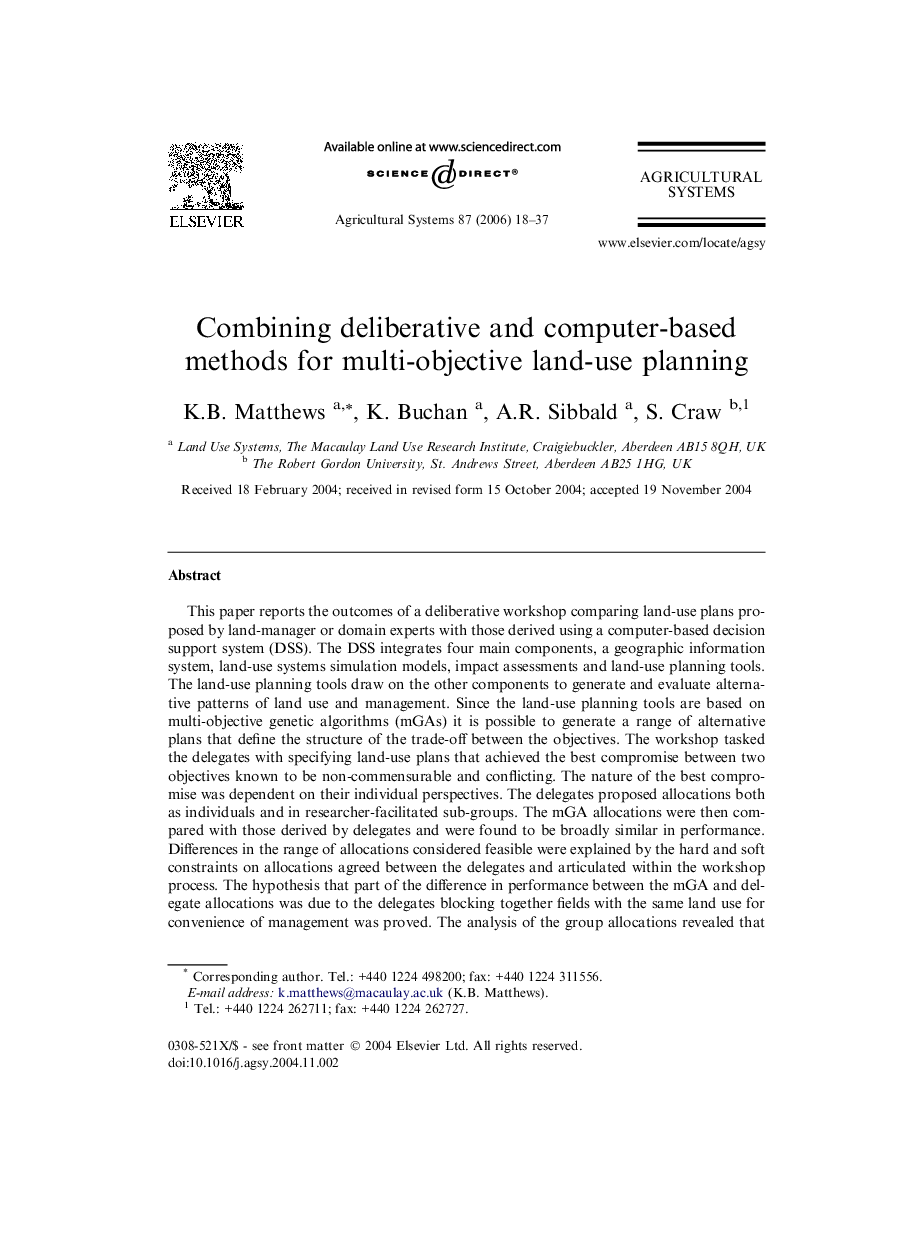| Article ID | Journal | Published Year | Pages | File Type |
|---|---|---|---|---|
| 4492036 | Agricultural Systems | 2006 | 20 Pages |
This paper reports the outcomes of a deliberative workshop comparing land-use plans proposed by land-manager or domain experts with those derived using a computer-based decision support system (DSS). The DSS integrates four main components, a geographic information system, land-use systems simulation models, impact assessments and land-use planning tools. The land-use planning tools draw on the other components to generate and evaluate alternative patterns of land use and management. Since the land-use planning tools are based on multi-objective genetic algorithms (mGAs) it is possible to generate a range of alternative plans that define the structure of the trade-off between the objectives. The workshop tasked the delegates with specifying land-use plans that achieved the best compromise between two objectives known to be non-commensurable and conflicting. The nature of the best compromise was dependent on their individual perspectives. The delegates proposed allocations both as individuals and in researcher-facilitated sub-groups. The mGA allocations were then compared with those derived by delegates and were found to be broadly similar in performance. Differences in the range of allocations considered feasible were explained by the hard and soft constraints on allocations agreed between the delegates and articulated within the workshop process. The hypothesis that part of the difference in performance between the mGA and delegate allocations was due to the delegates blocking together fields with the same land use for convenience of management was proved. The analysis of the group allocations revealed that the decision-making process had failed to improve on the individual allocations. From these results it was concluded that there was a potential role for mGA based land-use planning tools in researching into, and deliberating on, the possible impacts of policy or other factors affecting land-use systems. It was further concluded that the tools should not be used in isolation since there was the need for stake-holder inputs to adequately define the range of feasible and practical land-use plans.
